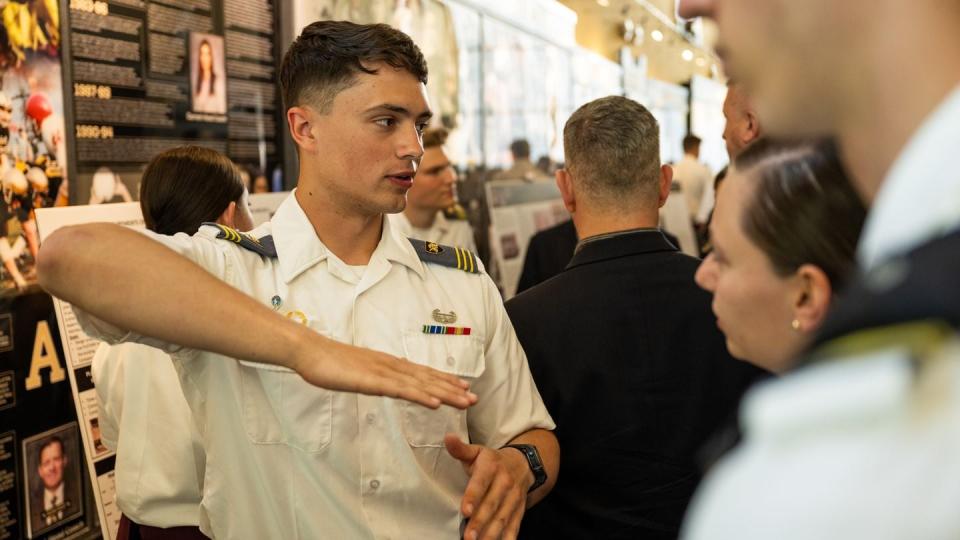West Point team’s computerized rifle scope adjusts itself in combat
While in the mountains of Afghanistan, some soldiers faced issues adjusting their sights to differing elevations when under fire during an ambush.
After hearing this issue, a group of cadets at United States Military Academy West Point in New York sought to fix that problem by signing up for a project called Hindsight, sponsored by Picatinny Arsenal in New Jersey. The cadets, David Caddigan, Aiden Looney, Ashton Gaines, Heyward Hutson, dubbed the project “a smart sight for the average soldier.”
The quartet developed a proof of concept for an automatic optic adjustment attachment for a soldier’s weapon at the academy’s 25th Annual Projects Day Research Symposium on May 2. The project is one of hundreds of research projects presented by students at the academy.
“Basically, if you’re shooting at an incline, you’re going to be impacting quite a bit higher than you want,” Looney told Army Times. “The goal of this is basically to kind of adjust my sight picture — or what you’re seeing through your scope — so that you are actually getting on target when you’re shooting up a hill.”
The issue with in-the-moment adjustments has to do with the trajectory of rounds — and the pace at which a soldier can compensate and calculate in real time.
“The trajectory of an M4 round is not a straight line,” Caddigan explained. “It’s more of a parabolic — going up and then back down. When you’re shooting up a hill, that’s gonna throw them off based on different gravity and distance as well.”
A soldier’s rifle is traditionally zeroed for one distance or elevation, but the cadets’ proof of concept allows for a rifle to constantly reset, Caddigan said.
Hindsight uses a ballistics computer — attached to the side of the rifle — where a gyroscope measures the tilt and pitch of the weapon. That data going into the computer gets calculated through algorithms designed by Looney to enable motor movements that micro-adjust the sight to where the bullet is predicted to be shot.

The group spent five months working on the specific model they presented to the public, after deciding to use currently fielded scopes.
As with any experiments and inventions, there were some setbacks and issues to solve. The students only found the correct sized motor for the proof of concept three weeks before the project was presented.
As for the future of Hindsight, it will take another group of cadets to carry the project out of the proof of concept phase.
“We presented the device to the math department and … to some of the mechanical engineering [faculty],” Caddigan said. “One of the math advisors … thought it was a really interesting concept, because it’s something he experienced when he was deployed and seeing how inaccurate it is shooting around barriers and shooting up and down mountains.”
“But we’re still at kind of a proof of concept stage to where it’s still a little bit larger than you want on a rifle,” he added.
The cadets, who will be graduating later this month, haven’t heard what the future holds for the project. If another group of cadets pick up where they left off, though, the cadets had a few ideas of what issues might need tinkering.
“It’d be important to work into debugging the code and interacting more fluidly and gently with the motors, just because there’s some feedback that’s kind of making some slightly inaccurate adjustments,” Caddigan told Army Times.
Their sponsors at Picatinny Arsenal also offered the idea of a different power supply for the project, which would reduce the size of the ballistic computer, if the project is continued.
Correction: A previous version of this article misstated where Picatinny Arsenal was located. It is based in New Jersey. Additionally, this article has been updated to note that a round fired at an incline would impact higher than intended.

